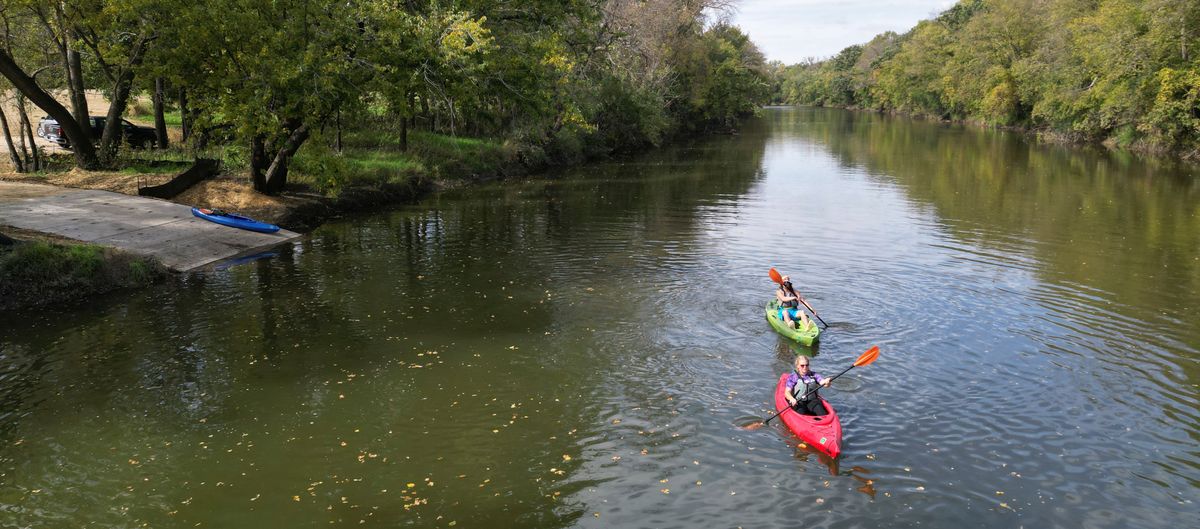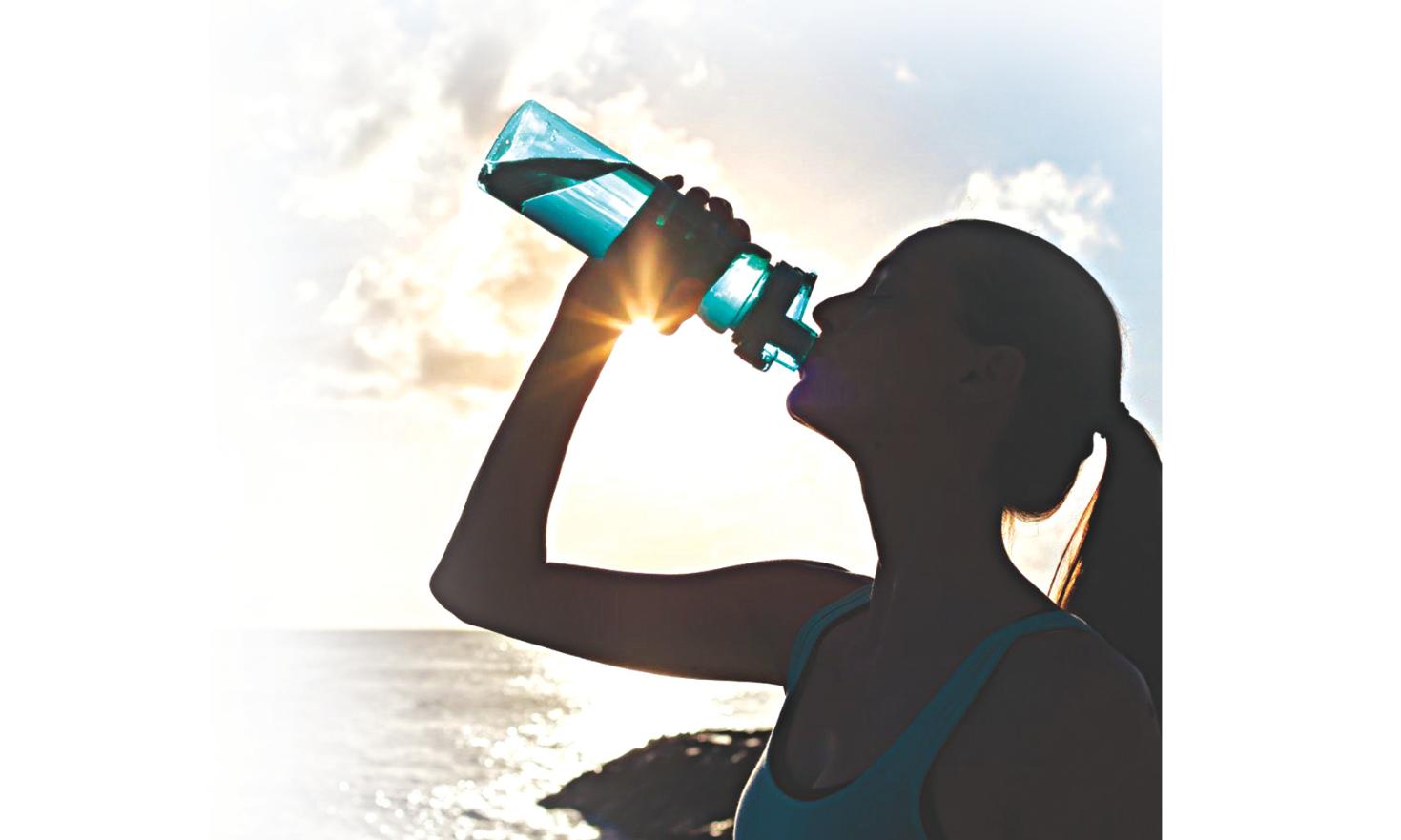Q&A: Why helping juvenile salmon could muddy Salem’s drinking water – Oregon Public Broadcasting – OPB

Report on the Conflict Between Salmon Conservation and Municipal Water Security in Salem, Oregon
Introduction: Balancing Ecosystem Health and Human Needs
A plan to aid the recovery of endangered salmon populations in Oregon’s Willamette Valley presents a significant challenge to the provision of safe drinking water for nearly 200,000 residents and businesses in the city of Salem. This situation creates a direct conflict between several key United Nations Sustainable Development Goals (SDGs), primarily pitting the objectives of SDG 14 (Life Below Water) and SDG 15 (Life on Land) against the fundamental right to SDG 6 (Clean Water and Sanitation). The proposed method, a reservoir drawdown, could compromise water quality, strain filtration infrastructure, and impact the resilience of the community, as outlined in SDG 11 (Sustainable Cities and Communities).
The Conservation Mandate and Reservoir Drawdowns
The core of the conservation effort is the use of reservoir drawdowns at dams operated by the Army Corps of Engineers, such as the one at Detroit Lake. This strategy is a response to the critical decline of salmon, a keystone species whose survival is central to achieving SDG 14 and SDG 15 targets on halting biodiversity loss and restoring freshwater ecosystems.
- Problem: Dams in the Willamette Valley were constructed for flood control without adequate fish passage systems, blocking the natural migration routes for salmon.
- Mechanism: A drawdown involves releasing large volumes of water from a dam’s reservoir to mimic a more natural river flow.
- Objective: This process is designed to “flush” juvenile salmon downstream on their journey to the ocean, a method that has proven effective in other locations for improving fish survival rates.
Impact on SDG 6: Clean Water and Sanitation
While beneficial for fish migration, the drawdown process poses a direct threat to Salem’s water supply, which is sourced downstream. This action could severely undermine progress toward SDG 6, which aims to ensure the availability and sustainable management of water for all.
- Sediment Release: Decades of accumulated silt and mud trapped behind the dam are released during a deep drawdown.
- Water Contamination: The resulting high turbidity turns the river water into a sediment-heavy slurry, described as “chocolate milk.”
- Infrastructure Strain: Existing water treatment facilities, such as the Stayton facility serving Salem, are not equipped to handle such extreme levels of sediment, risking system failure and compromising the safety of the drinking water supply.
- Community Resilience (SDG 11): A compromised water system also threatens other essential services, including the availability of water for firefighting, thereby reducing the city’s overall resilience.
Analysis of Proposed Solutions and Infrastructure Challenges (SDG 9)
Several solutions are being considered to resolve this conflict, each with implications for SDG 9 (Industry, Innovation, and Infrastructure), which calls for building resilient and sustainable infrastructure.
Option 1: Floating Fish Collector
- Description: A massive, football-field-sized apparatus of pumps that would act as a “fish vacuum,” sucking up river water and fish. The captured juvenile salmon would then be transported downstream via trucks.
- Challenges: This technological solution is associated with a prohibitive price tag and lacks substantial evidence of its effectiveness on such a large scale, making it a questionable investment in sustainable infrastructure.
Option 2: Infrastructure Investment and Partnership (SDG 17)
- Description: The Army Corps of Engineers could provide financial and technical assistance to local governments to upgrade their water treatment capabilities or develop alternative water sources.
- Alignment with SDGs: This approach fosters a partnership between federal and local entities, in line with SDG 17 (Partnerships for the Goals). It aims to build resilient infrastructure (SDG 9) that allows for the achievement of conservation goals (SDG 14, SDG 15) without compromising the public’s right to clean water (SDG 6).
Conclusion: An Integrated Approach for Sustainable Development
The situation in Salem highlights the complex interdependencies of the Sustainable Development Goals. A lasting solution cannot prioritize one goal at the expense of another. Moving forward requires an integrated strategy that balances the ecological necessity of salmon restoration with the fundamental human need for safe water. Through strategic partnerships and investment in resilient, adaptive infrastructure, it is possible to create a solution that supports both thriving ecosystems and sustainable communities.
Identified Sustainable Development Goals (SDGs)
- SDG 6: Clean Water and Sanitation
- SDG 11: Sustainable Cities and Communities
- SDG 14: Life Below Water
- SDG 15: Life on Land
Specific SDG Targets
-
SDG 6: Clean Water and Sanitation
- Target 6.1: Achieve universal and equitable access to safe and affordable drinking water for all.
The article highlights a direct threat to the “drinking water that nearly 200,000 Salem residents and business customers rely on.” The plan to help salmon could compromise the safety of this water supply. - Target 6.3: Improve water quality by reducing pollution.
The drawdown process is described as flushing “giant deposits of mud and silt” downstream, which degrades water quality. The article notes that in other places, this has made the water look “like chocolate milk,” a clear sign of pollution by sediment. - Target 6.6: Protect and restore water-related ecosystems.
The entire purpose of the reservoir drawdown is an attempt to restore a more natural river flow to aid salmon migration. The article states the goal is to make the river “flowing more like a natural river” to help fish that are on the brink of extinction.
- Target 6.1: Achieve universal and equitable access to safe and affordable drinking water for all.
-
SDG 11: Sustainable Cities and Communities
- Target 11.5: Significantly reduce the number of people affected by disasters, including water-related disasters, and decrease the direct economic losses.
The situation is framed as a potential crisis, with the article mentioning that “Salem considers declaring drinking water emergency.” This directly relates to protecting a population of nearly 200,000 people from a water-related disaster and avoiding “drastic impacts on Salem’s water filtration system.”
- Target 11.5: Significantly reduce the number of people affected by disasters, including water-related disasters, and decrease the direct economic losses.
-
SDG 14: Life Below Water
- Target 14.2: Sustainably manage and protect marine and coastal ecosystems to avoid significant adverse impacts, including by strengthening their resilience, and take action for their restoration.
Although the action takes place in a river, salmon are anadromous fish that connect freshwater and marine ecosystems. The effort to save them is a direct action for the restoration of a species critical to both environments.
- Target 14.2: Sustainably manage and protect marine and coastal ecosystems to avoid significant adverse impacts, including by strengthening their resilience, and take action for their restoration.
-
SDG 15: Life on Land
- Target 15.1: Ensure the conservation, restoration and sustainable use of terrestrial and inland freshwater ecosystems and their services.
The article focuses on the conflict within an inland freshwater ecosystem (the Willamette Valley river system). The drawdown is a method aimed at restoring the ecosystem to support its native fish population. - Target 15.5: Take urgent and significant action to reduce the degradation of natural habitats, halt the loss of biodiversity and, by 2020, protect and prevent the extinction of threatened species.
This is a central theme of the article, which states that salmon “are on the brink of extinction in the Willamette Valley.” The drawdown is presented as an urgent action to prevent this extinction.
- Target 15.1: Ensure the conservation, restoration and sustainable use of terrestrial and inland freshwater ecosystems and their services.
Implied Indicators for Measuring Progress
-
SDG 6: Clean Water and Sanitation
- Indicator related to 6.1.1 (Proportion of population using safely managed drinking water services): The article implies this can be measured by monitoring the quality of tap water for the “nearly 200,000 Salem residents” and tracking any service disruptions or emergency declarations. The amount of sediment and turbidity (“chocolate milk” appearance) in the water entering the treatment plant is a direct, measurable factor.
- Indicator related to 6.3.2 (Proportion of bodies of water with good ambient water quality): Progress could be measured by testing the sediment levels and turbidity of the river water downstream from the dam after a drawdown.
-
SDG 11: Sustainable Cities and Communities
- Indicator related to 11.5.2 (Number of disruptions to basic services): This can be measured by whether Salem has to declare a “drinking water emergency,” ration water, or if the “water filtration system” fails or requires a shutdown. The impact on “firefighting resources” would also be a measurable outcome.
-
SDG 15: Life on Land
- Indicator related to 15.5.1 (Red List Index): The article states that salmon are “on the brink of extinction.” A direct indicator of success would be the change in the conservation status of the salmon population over time. The article also mentions a direct measure of effectiveness: the success rate of “getting salmon downstream” via the drawdown method.
Summary of SDGs, Targets, and Indicators
| SDGs | Targets | Indicators (Mentioned or Implied in Article) |
|---|---|---|
| SDG 6: Clean Water and Sanitation | 6.1: Achieve universal and equitable access to safe and affordable drinking water for all. | The number of people (nearly 200,000) whose drinking water safety is at risk; issuance of water emergency declarations. |
| 6.3: Improve water quality by reducing pollution. | The level of sediment and turbidity in the river downstream of the dam (e.g., water looking like “chocolate milk”). | |
| 6.6: Protect and restore water-related ecosystems. | Implementation of measures to restore natural river flow (“flowing more like a natural river”). | |
| SDG 11: Sustainable Cities and Communities | 11.5: Significantly reduce the number of people affected by disasters, including water-related disasters. | Disruptions to the water filtration system; impact on firefighting resources; declaration of a “drinking water emergency.” |
| SDG 14: Life Below Water | 14.2: Sustainably manage and protect marine and coastal ecosystems…and take action for their restoration. | Actions taken to restore anadromous fish populations connecting freshwater and marine systems. |
| SDG 15: Life on Land | 15.1: Ensure the conservation, restoration and sustainable use of…inland freshwater ecosystems. | The implementation of drawdown plans to restore the river’s function for fish migration. |
| 15.5: Take urgent action to…halt the loss of biodiversity and prevent the extinction of threatened species. | The conservation status of the salmon (“on the brink of extinction”); the effectiveness of the drawdown in “getting salmon downstream.” |
Source: opb.org

What is Your Reaction?
 Like
0
Like
0
 Dislike
0
Dislike
0
 Love
0
Love
0
 Funny
0
Funny
0
 Angry
0
Angry
0
 Sad
0
Sad
0
 Wow
0
Wow
0










































































